Expedition: Retirement (![[personal profile]](https://www.dreamwidth.org/img/silk/identity/user.png) expedition_retirement) wrote2025-06-20 12:15 pm
expedition_retirement) wrote2025-06-20 12:15 pm
Entry tags:
Burgundy Bike Tour, day 1: Cluny, Chapaize, and the warm-up ride
The first day of our Burgundy bike tour began with us checking out of our hotel and walking to the Hotel Carlton in the city center, where we would be met by one of our tour guides and the bus that would transport us to the starting point of our tour. On previous bike tours, the warm-up ride on the first day typically was scheduled for the early afternoon, but it turned out that we wouldn't be riding until after 4pm that afternoon, after we checked into our hotel in the town of Tournus.
Along the way, we would make two stops before reaching our hotel. The first was in the town of Cluny, which once had the largest church in the world. The abbey in Cluny was largely independent from the political jurisdictions of Europe, and subject only to the authority of the Pope, and it became wealthy and powerful. Construction of the final abbey church began in 1088, and it would remain the world's largest church until the construction of the current Basilica of St. Peter in Rome in the 16th century. Unfortunately, the church would become a victim of the French Revolution, when it was largely destroyed as a source of building materials for other projects. We arrived in Cluny on market day, and we had a little time to explore the market. There was also a large equestrian competition going on nearby, and the streets around old town center were crowded. We walked through the market, taking in the sights, sounds, and smells of the various stalls, which offered fresh produce, meats, cheeses, as well as hot food. Unfortunately, we didn't have long to linger in the market before we were scheduled to meet for a guided tour around the town.
We arrived in Cluny on market day, and we had a little time to explore the market. There was also a large equestrian competition going on nearby, and the streets around old town center were crowded. We walked through the market, taking in the sights, sounds, and smells of the various stalls, which offered fresh produce, meats, cheeses, as well as hot food. Unfortunately, we didn't have long to linger in the market before we were scheduled to meet for a guided tour around the town.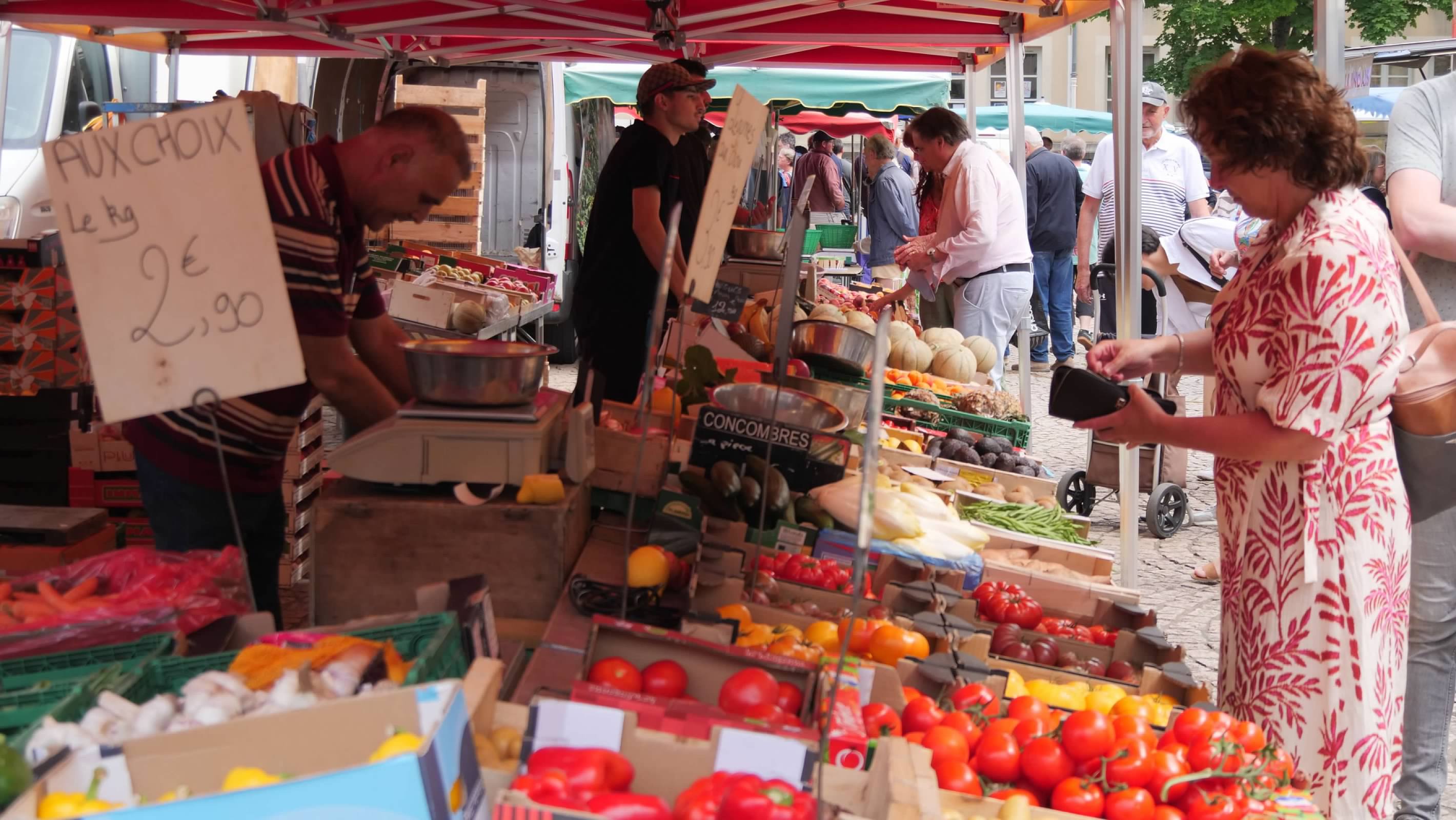
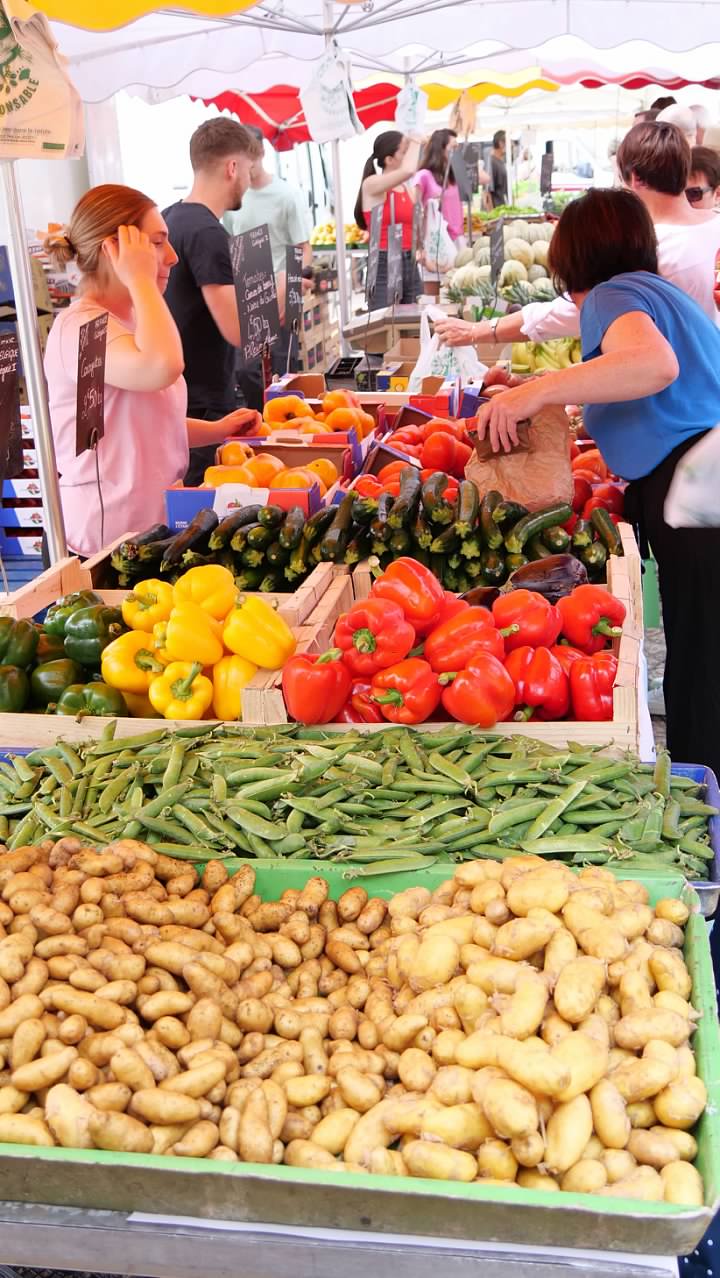
 Our tour guide started with the history of the abbey, describing the scale of the church that once stood here, and showing us how its footprint is commemorated in the pavement, with the paving stones marking the locations of the walls and columns. As we walked through the town, our tour guide pointed out examples of the different architectural periods represented by the homes and businesses here. Cluny has a remarkable number of buildings from the medieval and Renaissance periods, and it is fascinating to see the changes made through the centuries.
Our tour guide started with the history of the abbey, describing the scale of the church that once stood here, and showing us how its footprint is commemorated in the pavement, with the paving stones marking the locations of the walls and columns. As we walked through the town, our tour guide pointed out examples of the different architectural periods represented by the homes and businesses here. Cluny has a remarkable number of buildings from the medieval and Renaissance periods, and it is fascinating to see the changes made through the centuries.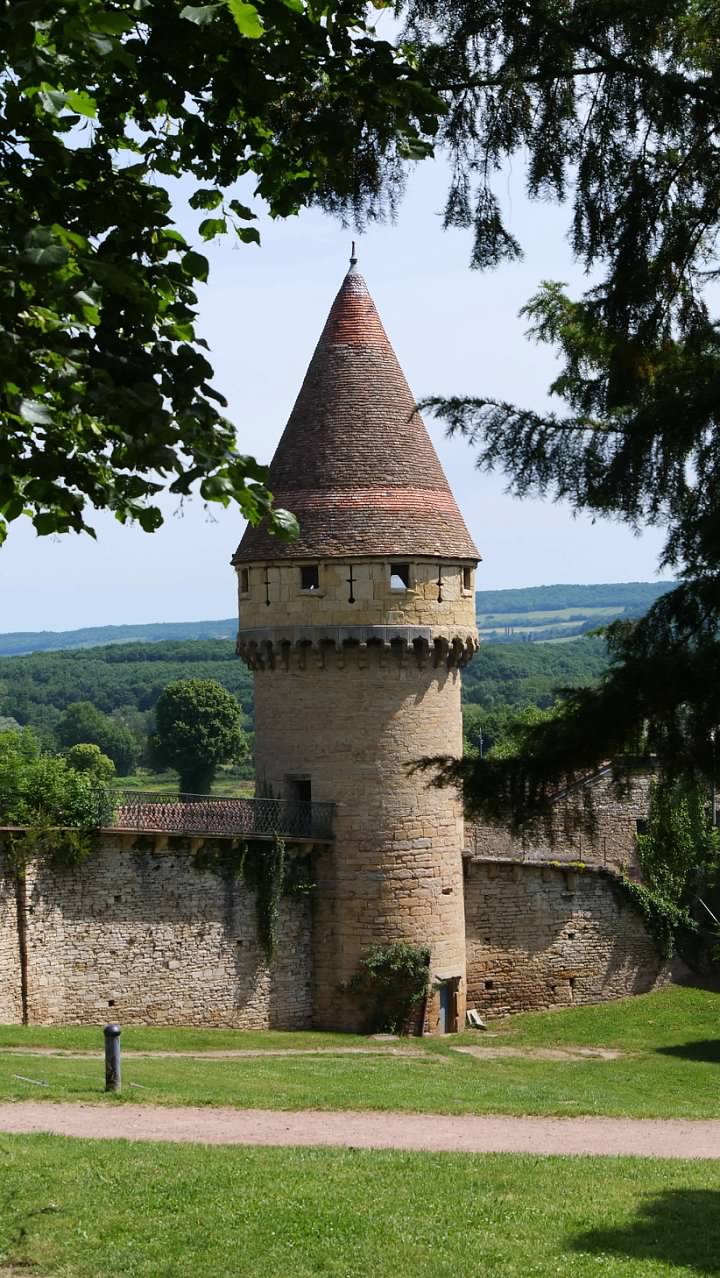
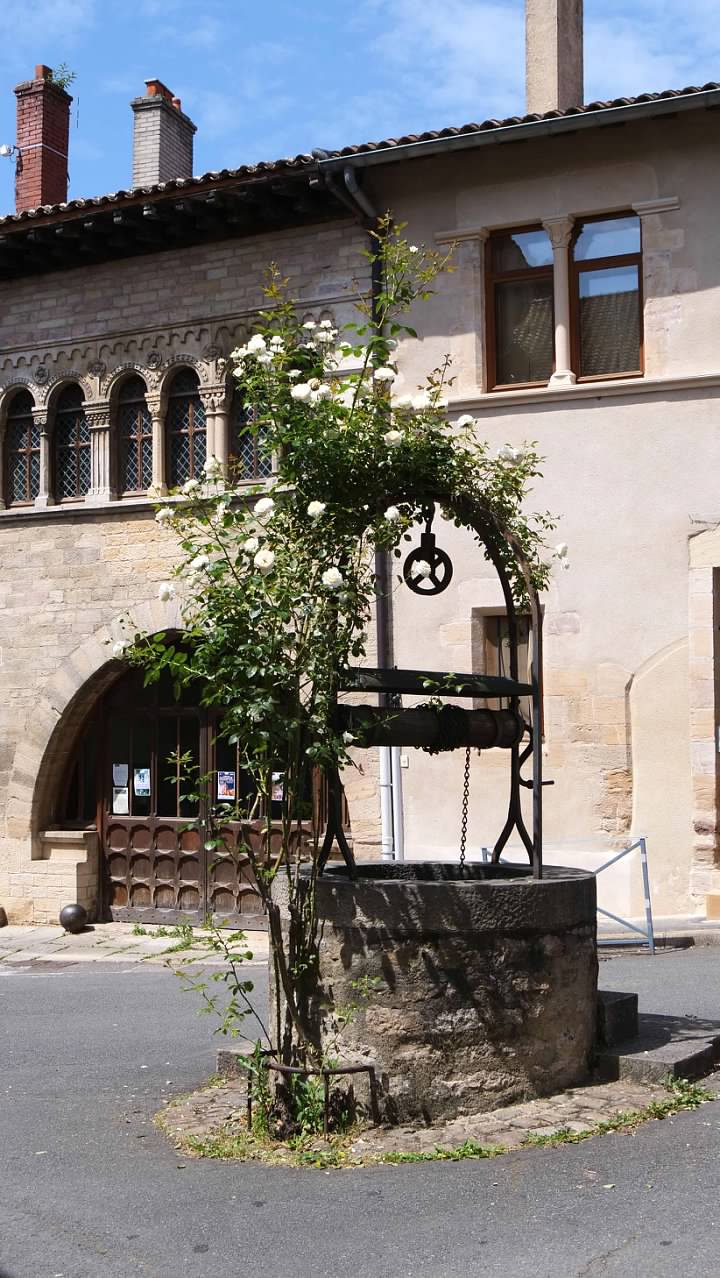
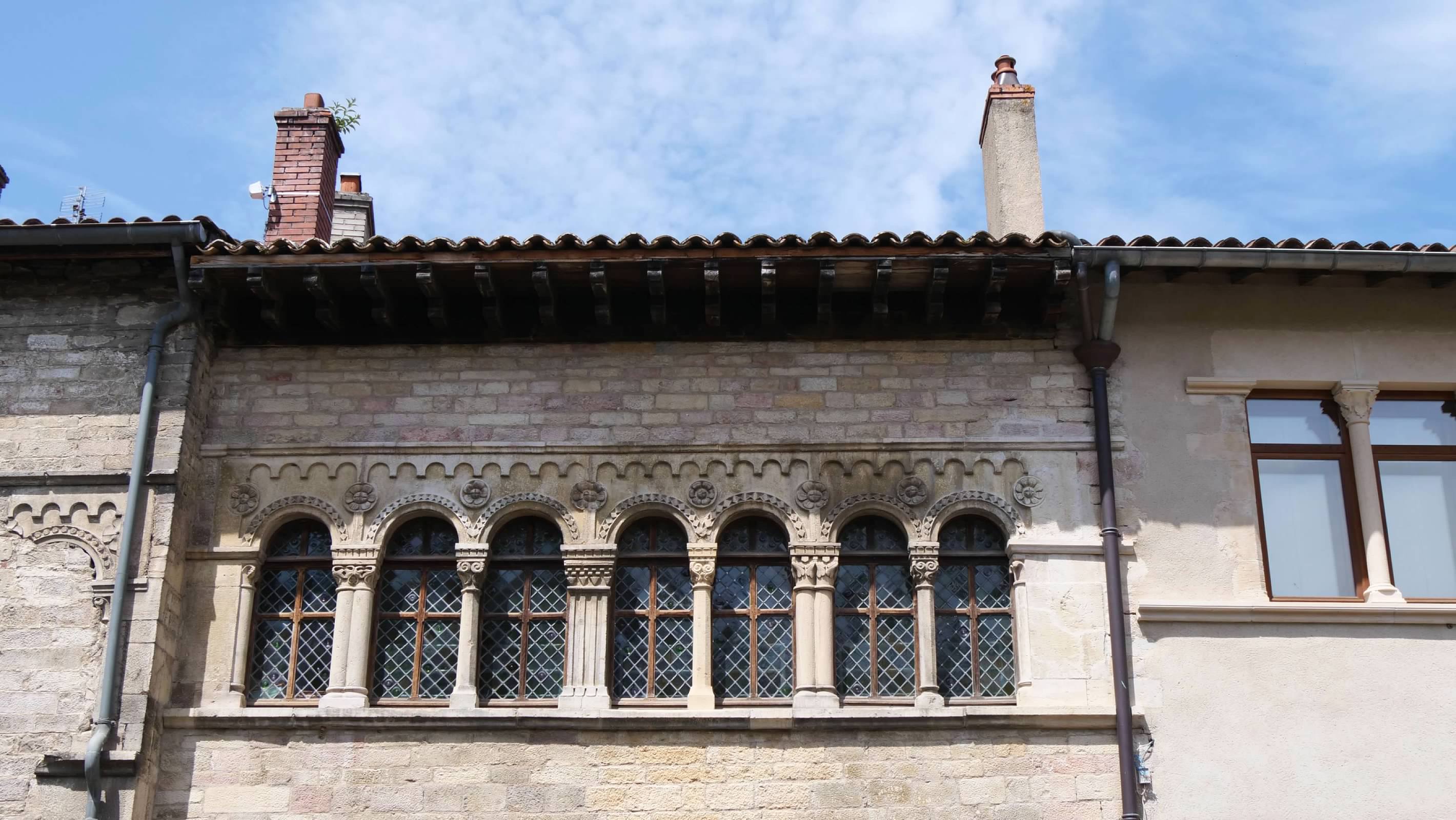
 After our tour, we had some free time to explore the town. We visited the Church of Notre-Dame de Cluny, a smaller Romanesque church that stands just outside the former abbey. We also wandered past the equestrian competition, and watched for a few minutes. Eventually, it was time to board the bus and continue to our next stop.
After our tour, we had some free time to explore the town. We visited the Church of Notre-Dame de Cluny, a smaller Romanesque church that stands just outside the former abbey. We also wandered past the equestrian competition, and watched for a few minutes. Eventually, it was time to board the bus and continue to our next stop.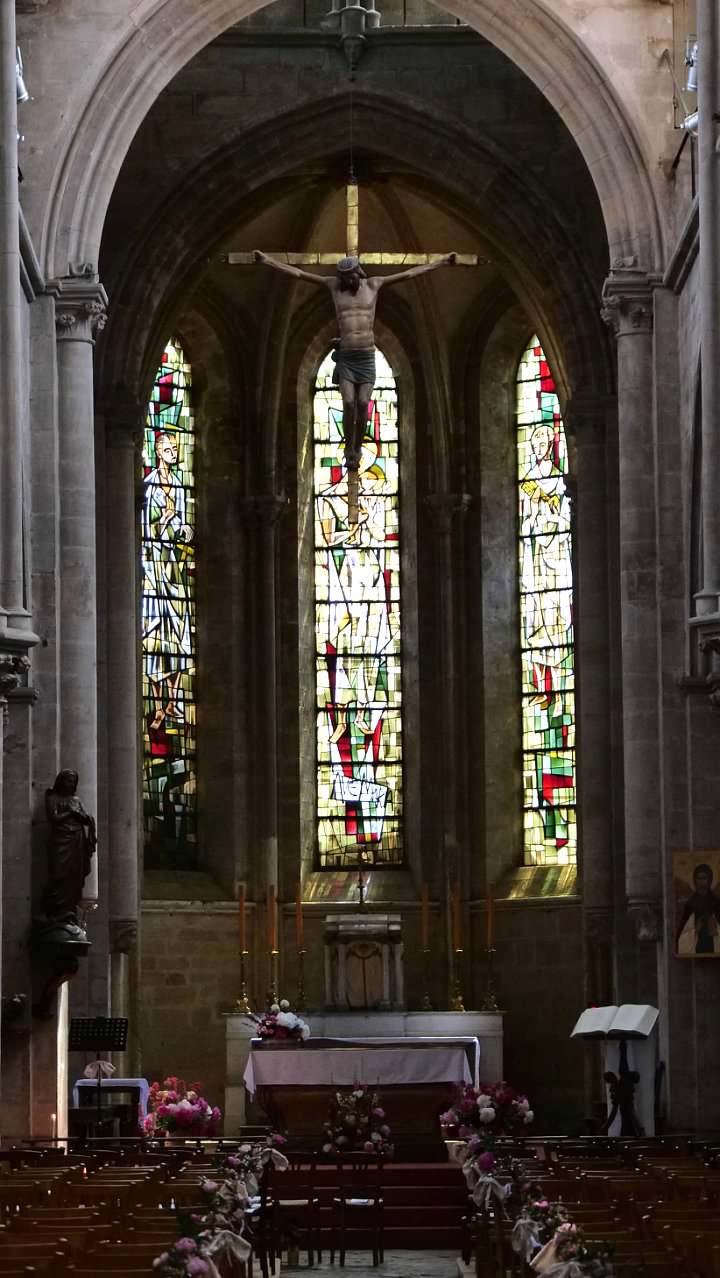
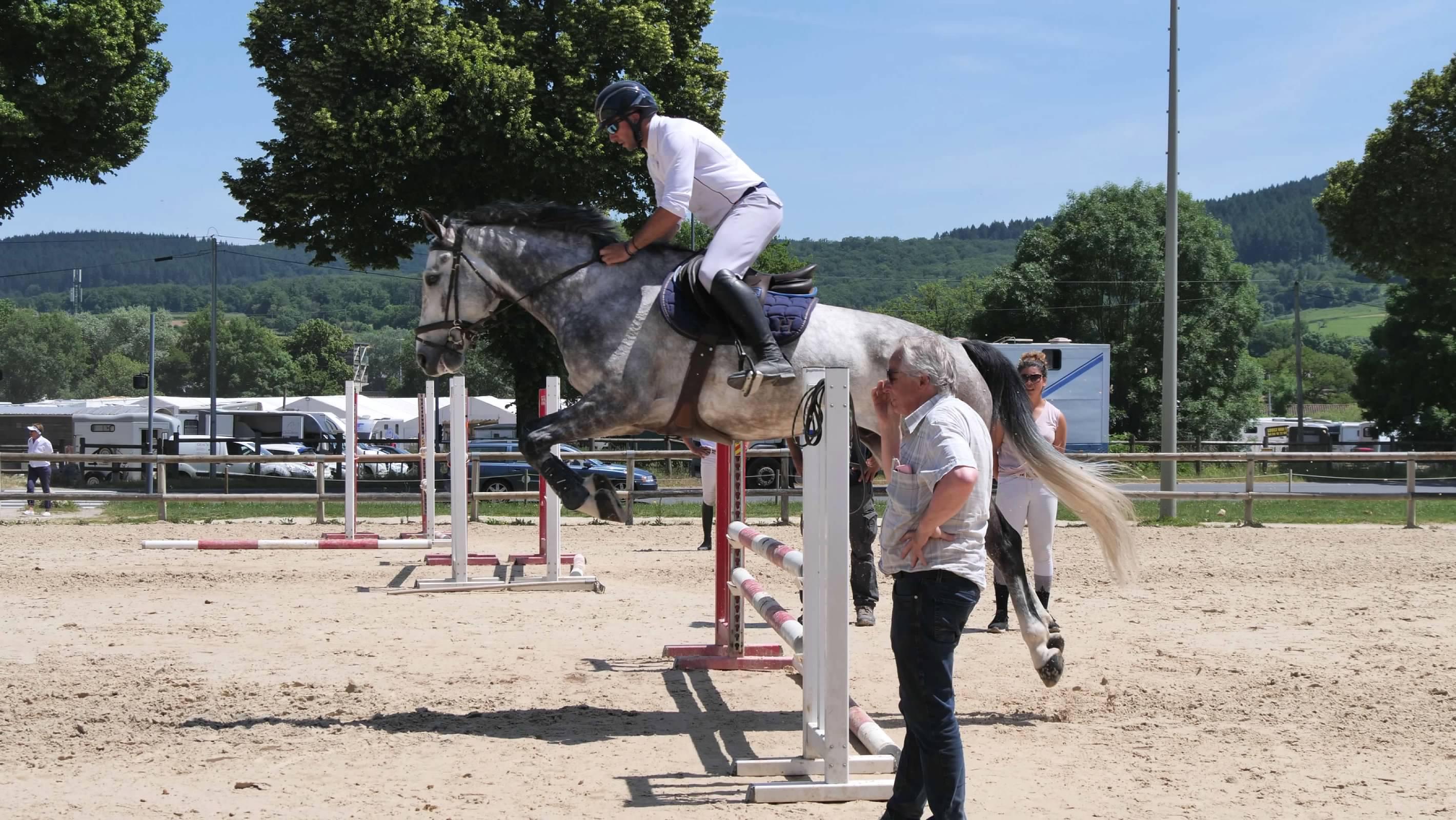
 Just a short ride away, we made a short stop in the town of Chapaize to visit the Church of Saint-Martin. Construction on this church began a thousand years ago, and it is a excellent example of the Romanesque architecture used in that period. Thick walls, with small, round topped windows, supported by solid buttresses make this church feel a bit like a fortress. Set inside a stone wall, with a cemetery surrounding it, this church is exactly what one envisions a medieval church looking like.
Just a short ride away, we made a short stop in the town of Chapaize to visit the Church of Saint-Martin. Construction on this church began a thousand years ago, and it is a excellent example of the Romanesque architecture used in that period. Thick walls, with small, round topped windows, supported by solid buttresses make this church feel a bit like a fortress. Set inside a stone wall, with a cemetery surrounding it, this church is exactly what one envisions a medieval church looking like.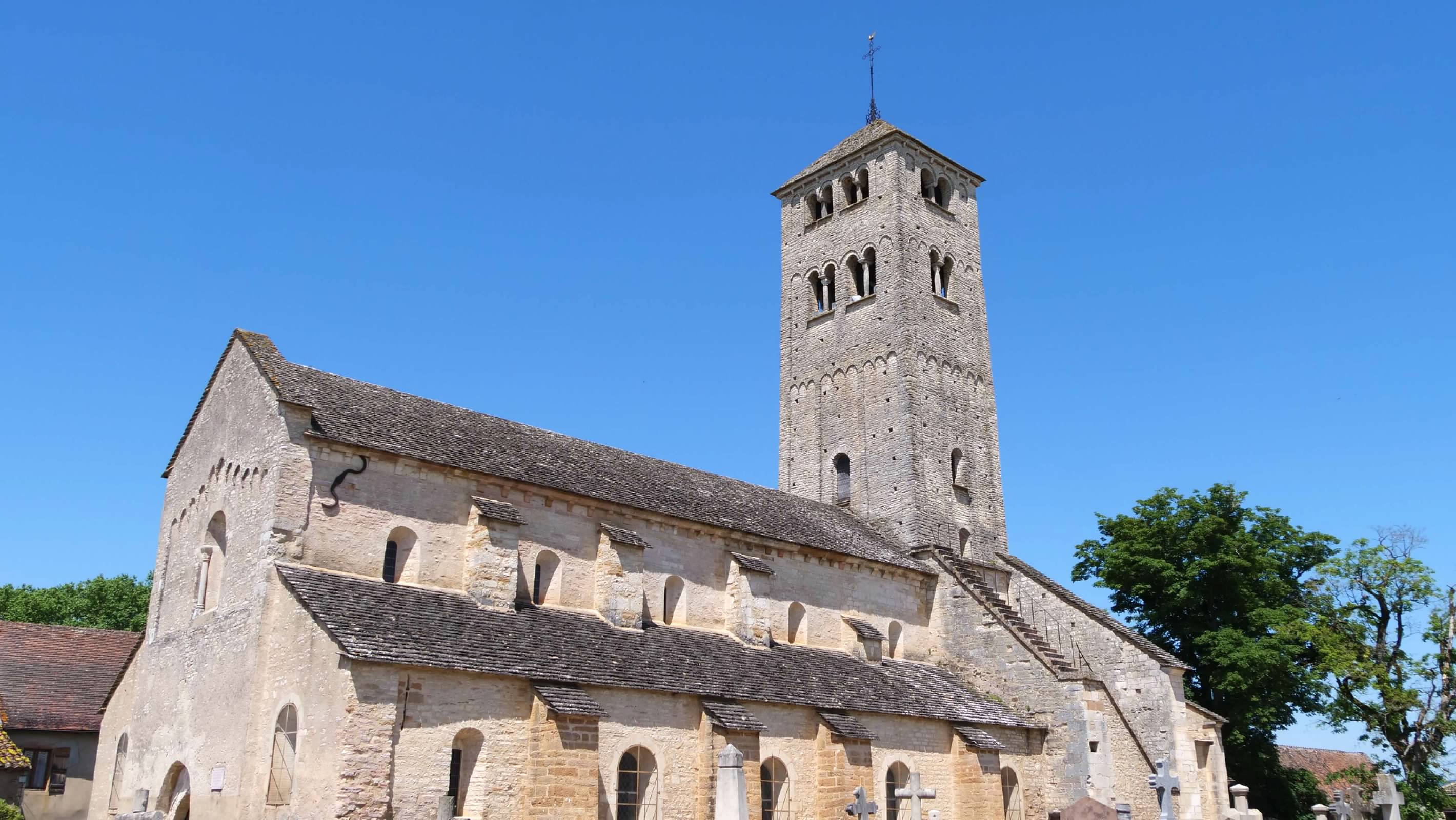
 After our short visit to the church in Chapaize, we continued to Tournus, where we checked into our hotel and prepared for our warm-up ride. As with our other bike tours, the first ride was short, intended to be an opportunity for us to become familiar with our bikes and to make sure that any issues were addressed before we set out for the longer rides. Our ride was a short, nine mile loop out of town along the banks of the Saône River and the countryside before returning to the hotel. As we rode back to town, we could see the tops of the towers of the Abbey of St. Philibert de Tournus above the treetops. This abbey was almost adjacent to our hotel, and we would visit it the next day.
After our short visit to the church in Chapaize, we continued to Tournus, where we checked into our hotel and prepared for our warm-up ride. As with our other bike tours, the first ride was short, intended to be an opportunity for us to become familiar with our bikes and to make sure that any issues were addressed before we set out for the longer rides. Our ride was a short, nine mile loop out of town along the banks of the Saône River and the countryside before returning to the hotel. As we rode back to town, we could see the tops of the towers of the Abbey of St. Philibert de Tournus above the treetops. This abbey was almost adjacent to our hotel, and we would visit it the next day.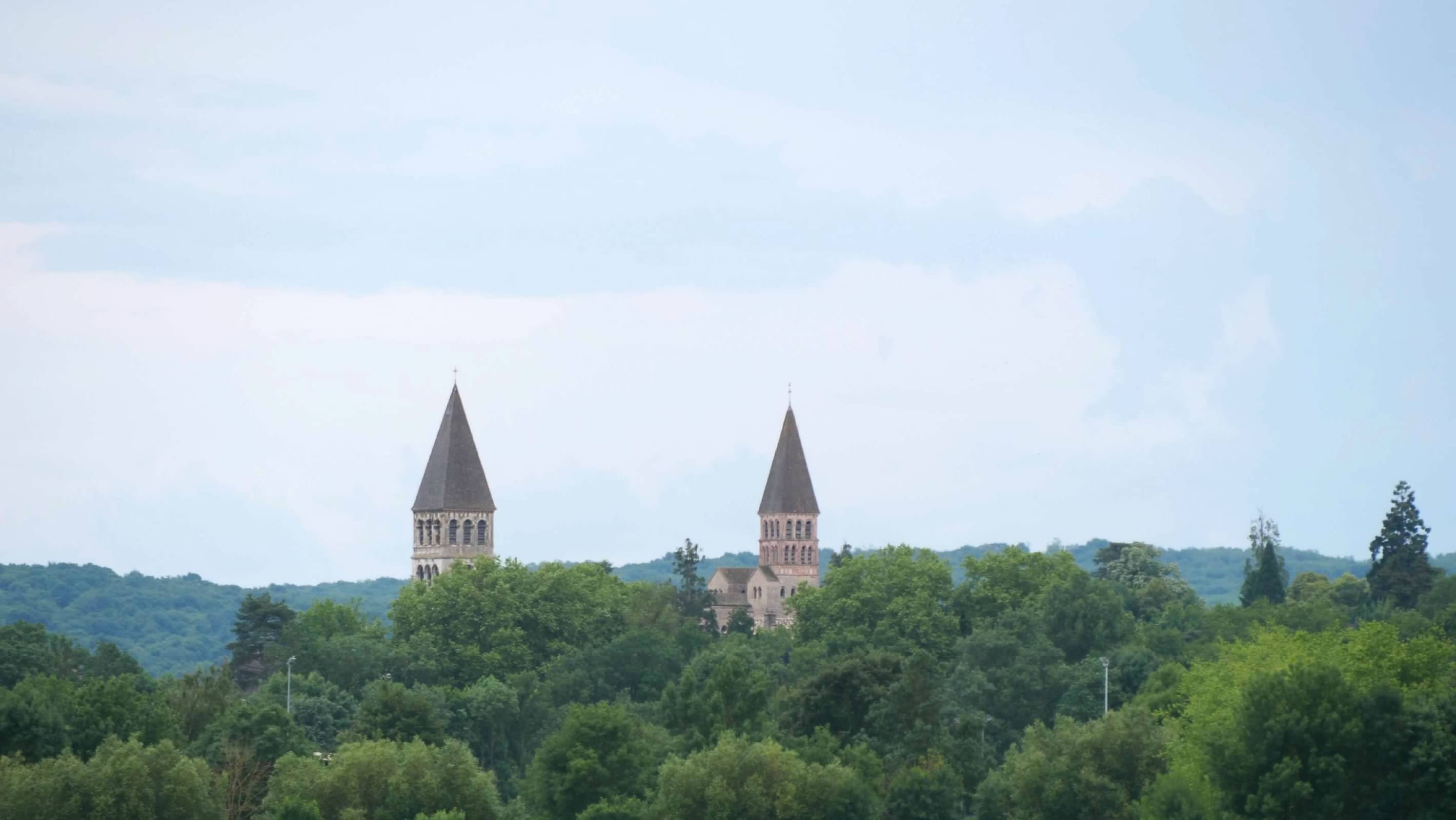
Along the way, we would make two stops before reaching our hotel. The first was in the town of Cluny, which once had the largest church in the world. The abbey in Cluny was largely independent from the political jurisdictions of Europe, and subject only to the authority of the Pope, and it became wealthy and powerful. Construction of the final abbey church began in 1088, and it would remain the world's largest church until the construction of the current Basilica of St. Peter in Rome in the 16th century. Unfortunately, the church would become a victim of the French Revolution, when it was largely destroyed as a source of building materials for other projects.